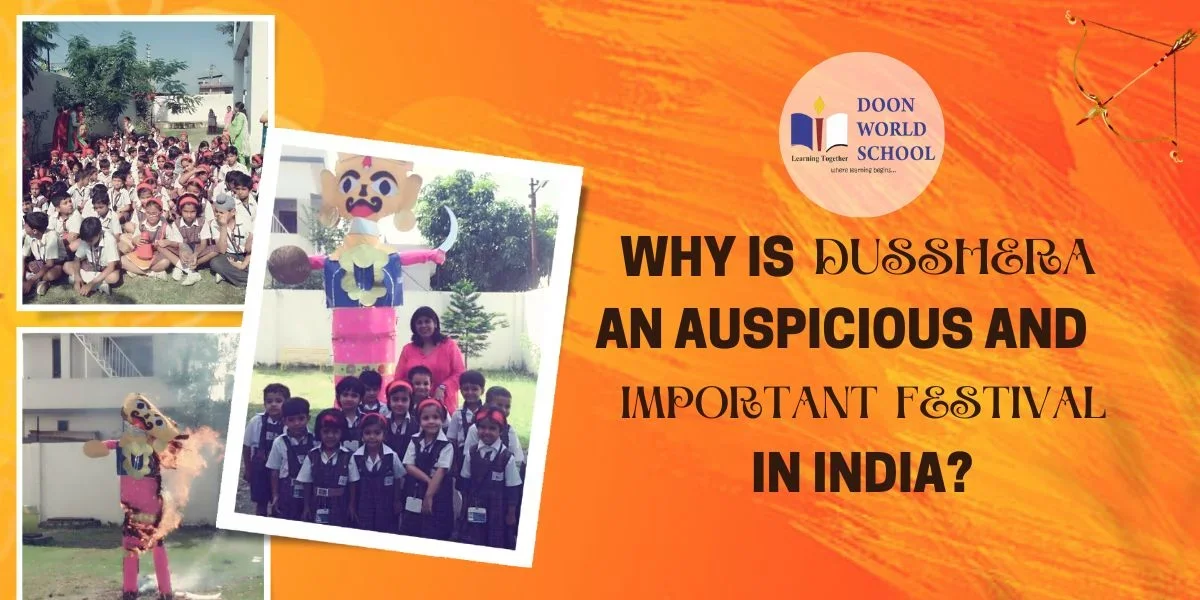
Why Is Dussehra an Auspicious and Important Festival in India?
It’s that time of year when everyone is looking forward to something. Festivals are being planned one after the other and preparations are in full swing. The month of October is traditionally divided into two parts: Navratri and Dussehra, with Dussehra falling on October 24th this year.
Dussehra is a significant Hindu festival that symbolizes the triumph of good over evil.
Why Is Dussehra Observed?
Due to the diversity of cultures and customs throughout India, the Dussehra festival is observed in a number of ways. In the eastern and southern states, Dussehra commemorates Goddess Durga’s triumph over the wicked demon Mahishasura. It falls on the tenth day of the Navratri.
Most northern and western Indian states, on the other hand, celebrate Dussehra as Lord Rama’s victory over Ravana. King Dasharatha intended to crown Rama, his eldest son, as King of Ayodhya a long time ago. Everyone in the kingdom was thrilled with the selection and eagerly awaited the coronation event.
However, Queen Kaikeyi wished for her son Bharata to be King of Ayodhya. So on the eve of the occasion, she claimed the two boons given to her by King Dasharatha years before. She intended that Rama be exiled for fourteen years in the jungle and that Bharata be crowned King of Ayodhya.
King Dashratha was forced to confer these boons on her and so Lord Rama, his wife Sita and his brother Lakshmana were exiled. They put up all royal luxuries and spent thirteen years walking through the woods.
During their final year in exile, Surpanakha, a Rakshasi, met the two brothers and after failing to attract the brothers, the Rakshasi proceeded to assassinate Sita. To this, Lakshmana came to a halt and severed her ears and nose. Surpanakha, injured and humiliated, went back to her brother Ravana, Lanka’s wicked monarch.
Thus in order to avenge his sister’s humiliation, Ravana decided to kidnap Sita. He kidnaped Sita and took her to his nation, where he proposed to her marriage but Sita fought back because she loved Lord Rama. Ravana then locked her up in the Ashoka Vatika (orchard).
When Lord Rama and Lakshmana found out about this, they went out to save Sita. On their voyage, they met Lord Hanuman, a dedicated follower of Lord Rama. Hanuman saw Sita when he landed in Lanka and told her that Lord Rama would soon come to rescue her.
They all flew to Lanka when Lord Hanuman informed Lord Rama of Sita’s safety. Lord Rama’s and Ravana’s forces engaged in a tremendous battle. He massacred the majority of Lanka’s army before confronting the ten-headed Ravana.
After a long battle, Lord Rama slew Ravana and was reunited with Sita. When their exile was over, they all went back to Ayodhya where Lord Rama was crowned as the new king.
How Is Dussehra Celebrated?
Dussehra, also known as Durga Pooja, is celebrated on the tenth day of Navratri. Maa Shailputri is honored on the first day of Navratri, followed by Maa Chandraghanta, Maa Skandmata and the other avatars of Goddess Durga.
The ten days preceding Dussehra are spent celebrating throughout India’s northern, western and central areas. People put up Ramayana-themed dance and theater performances. RamLeela is the name given to these plays and skits which are well-recognized around the world.
RamLeela depicts the entire story of Ravana kidnapping Maa Sita and Lord Rama’s valiant struggle against the evil ruler. On the tenth day that is on the day of Dussehra, massive effigies of Ravana are set ablaze, representing Lord Rama’s victory and reunion with Maa Sita.
Eastern and southern India, on the other hand, celebrate the Dussehra festival in a completely different style. It is observed as Durga Pooja, one of the most awaited Hindu festivals.
While the first nine days of Navratri are dedicated to various forms of Goddess Durga, the tenth day, also known as Durga Pooja or Dussehra, is an emotional one for devotees. Goddess Durga’s statues are submerged in rivers, oceans or other bodies of water on this day.
After the immersion, Goddess Durga is reported to return to Mount Kailash and reunite with Lord Shiva. Worshippers chant impassioned hymns, pray to Goddess Durga and seek her blessings throughout the immersion.
The Significance of Dussehra
The nine days before Dussehra or Durga Pooja, devotees in the eastern states honor Goddess Durga’s nine incarnations. Every one of these nine avatars reflects a different aspect of Goddess Durga. Maa Brahmacharini is worshipped as the source of all energy in the Universe, whereas Maa Kushmanda is adored as the emblem of tranquility and purity.
On the Dussehra festival, many people buy new cars, houses or other new stuff as it is considered a lucky day to start a new venture or business.
Devotees offer gifts and sweets to their relatives and friends and they believe in celebrating this day with their loved ones. People usually pray for a new beginning in their lives as well as forgiveness for whatever wrongdoings they have committed.



